Wasserorgel von Winnenden
Interactive Installation
The “Wasserorgel von Winnenden” is a musical fountain, powered by eight pressure washers and controlled by a musical keyboard. Passers-by are invited to play some tunes on the keyboard and the Wasserorgel responds with a magical water and light show. The machine memorizes each keystroke and repeats fragments of the played melodies, when nobody is using the keyboard.
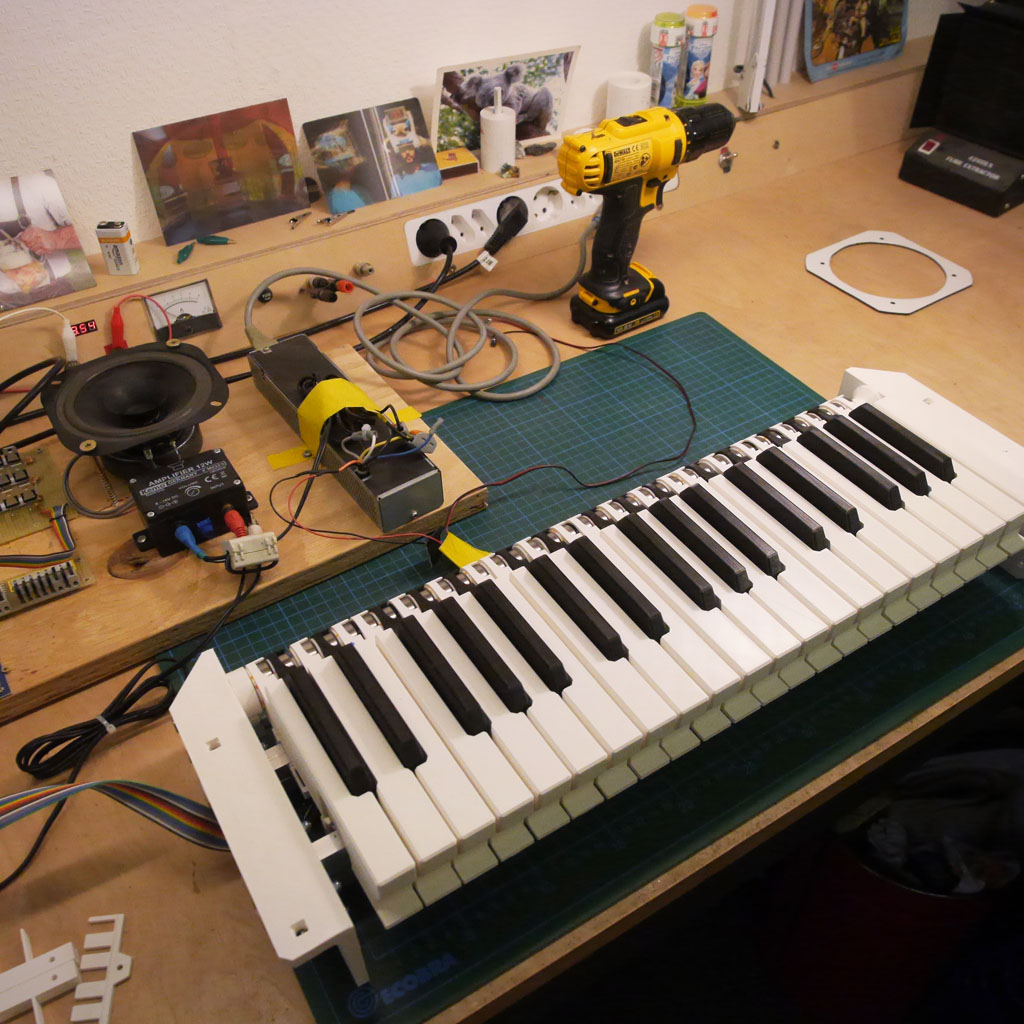
Project background
In early 2018 I was invited to participate in an art festival called “Drehmoment” that happened in Swabia, a region in the south-west of Germany. Swabia is well known for its high concentration of tech companies which make stuff like cars, robots which build cars, precision gears for robots which build cars, large scale brewery equipment and many other things.
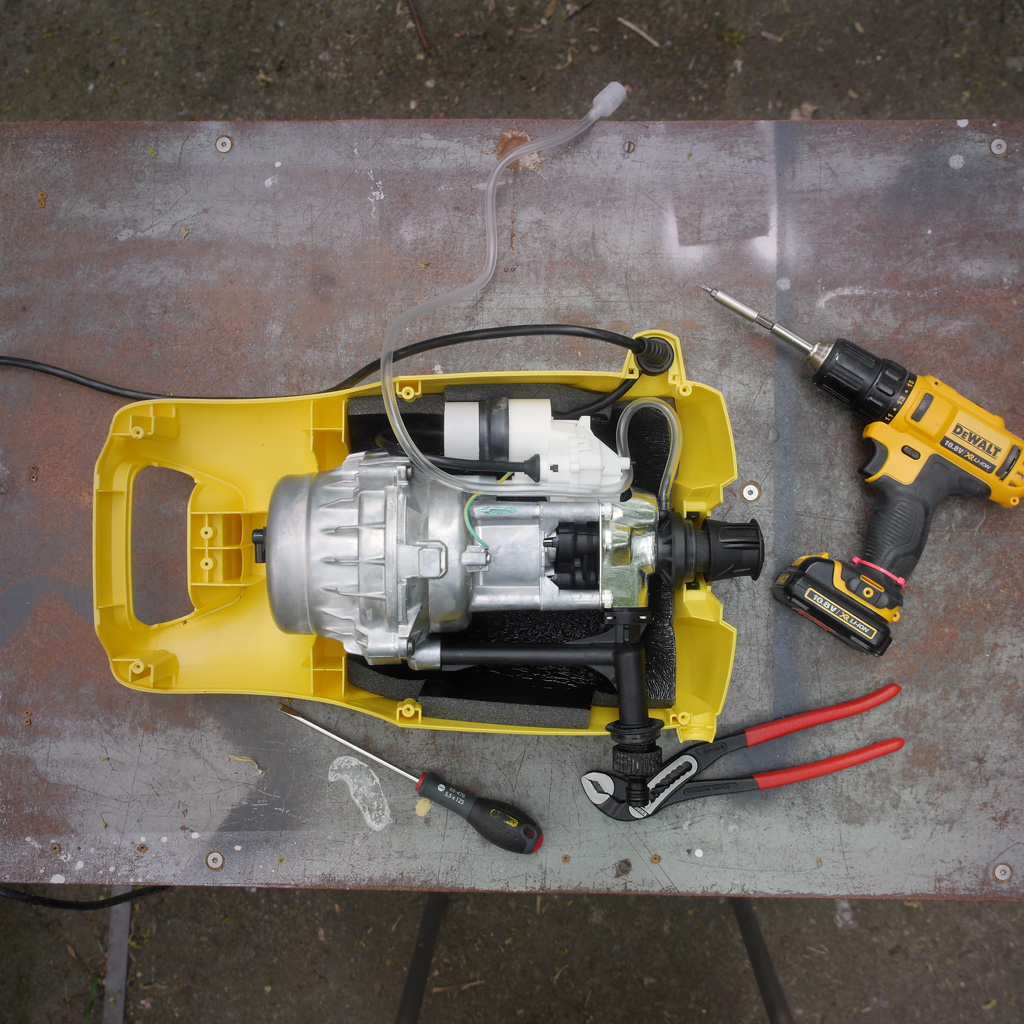
The festival's concept was to partner up artists with those regional companies, and to showcase artworks that were created through these collaborations. Benjamin Heidersberger, the festival curator, sent me a list of companies with which I could potentially team up – and I didn't have to think for a minute, when I found the name Kärcher on it. For those who don't know: Kärcher produces all kinds of cleaning equipment, but is probably best known for its pressure washers. The perfect material for a powerful artwork, imho!
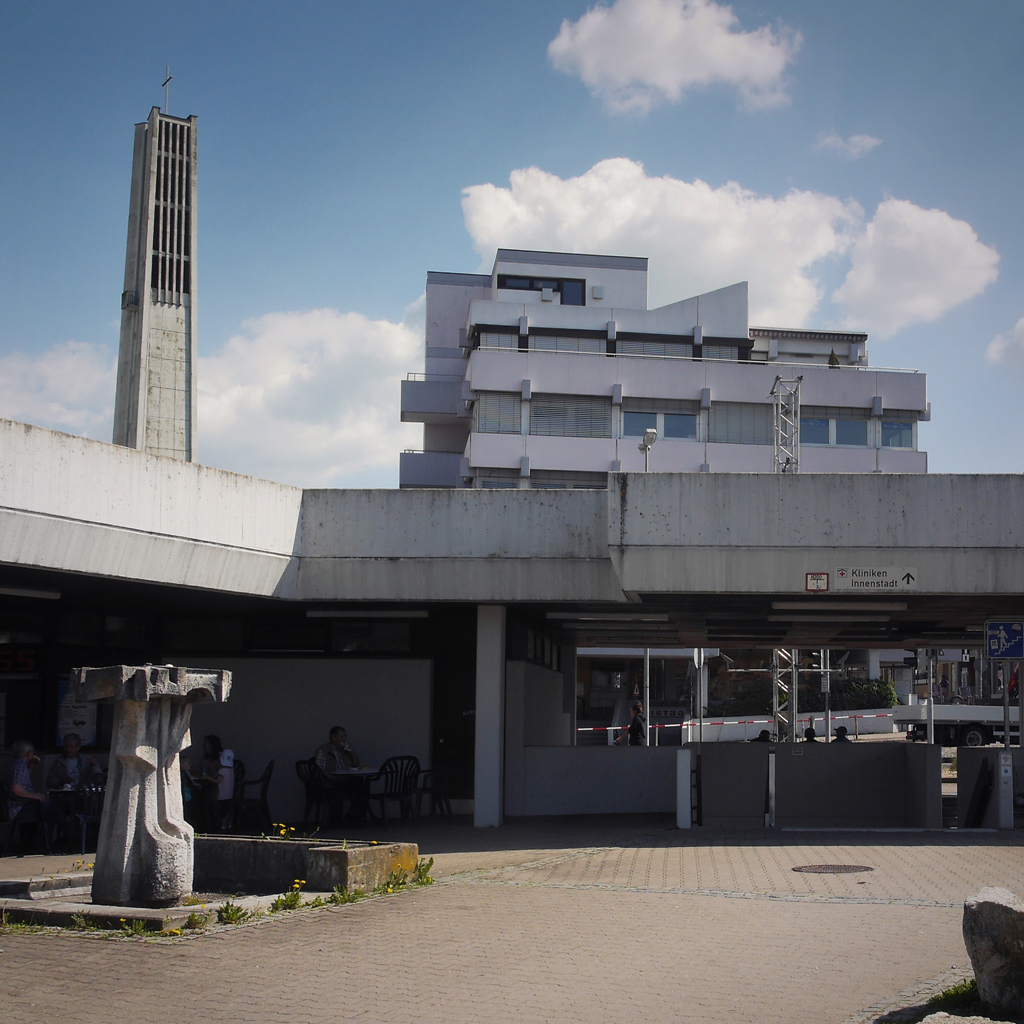
In April, I traveled to Winnenden, a small-town situated between beautiful vineyards and home of Kärcher’s headquarters. I learned that music played a big role in the city's history, as "The Song of Winnenden" seemed to be a smash hit roughly 800 years ago. Winnenden also has an abundance of fountains, the most prominent being the one on the marketplace. A statue on top of it depicts the girl who is mentioned in the medieval song's lyrics.
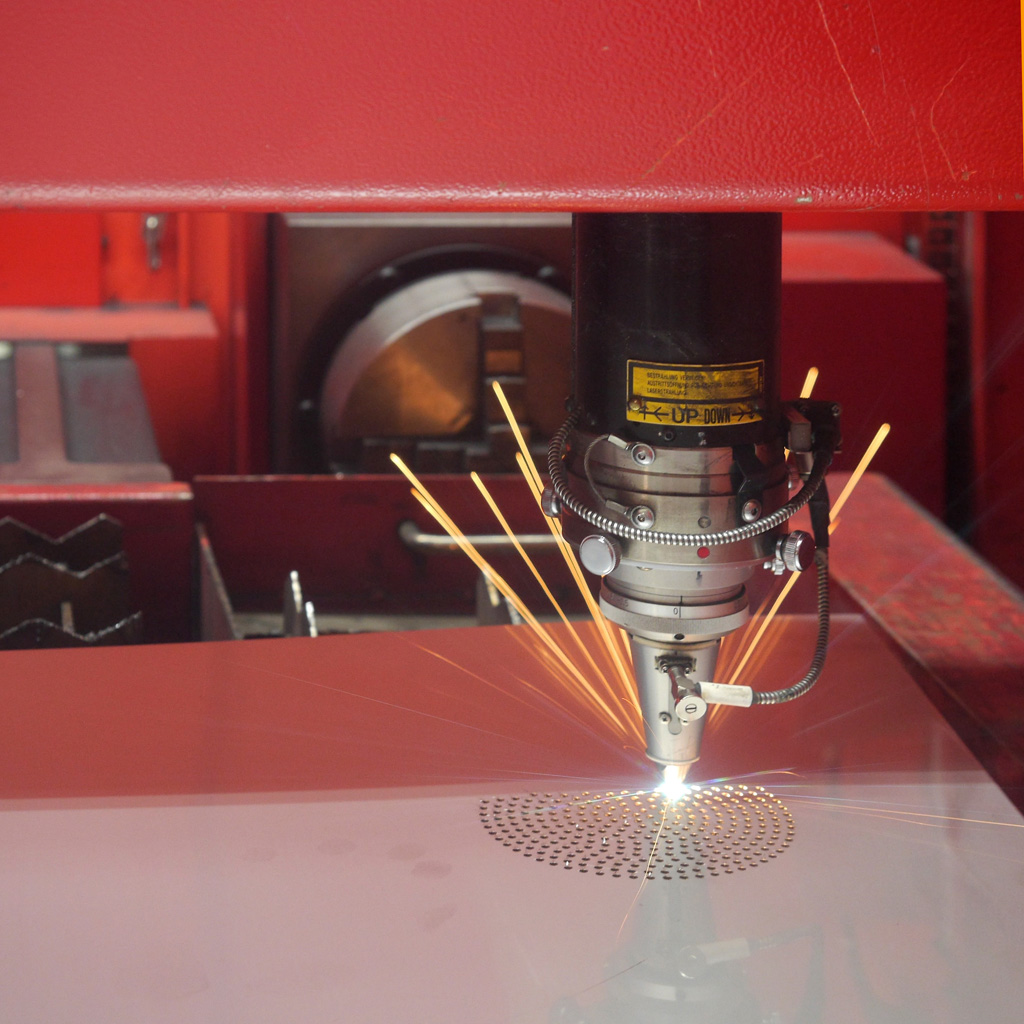
I also got a tour of Kärcher's production facilities, and I also got to see their impressive research labs and prototyping workshop. That's basically the most fantastic equipped FabLab/ Hacker-/Makerspace, I've ever seen!
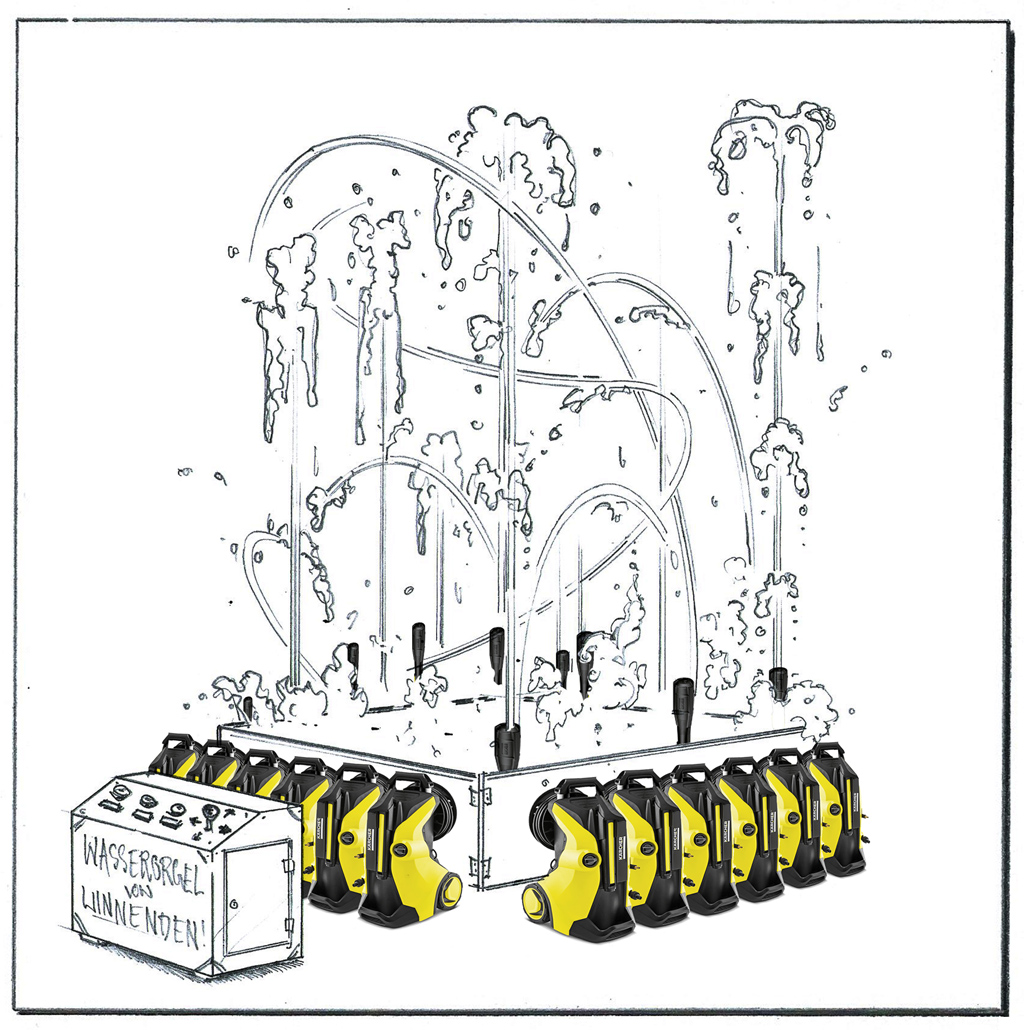
Inspired by all the different impressions, I proposed to build a Wasserorgel, a public musical fountain, which would be powered by Kärcher's pressure sprayers. Everyone involved seemed to think that this was a good idea and I started to work on it in Berlin. After four months of various preparations, I returned to Winnenden in September to build the final work on the “Kronenplatz”, which is a small but busy square in the town's center. Kronenplatz is conveniently located at the end of Alfred Kärcher Street, near Kärcher's facilities, so I had good access to their workshops. Additionally, the city of Winnenden offered me a temporary workshop space on the square, in a former bank. Opposite was a fast-food joint, so I had all I needed for starting the hard work.
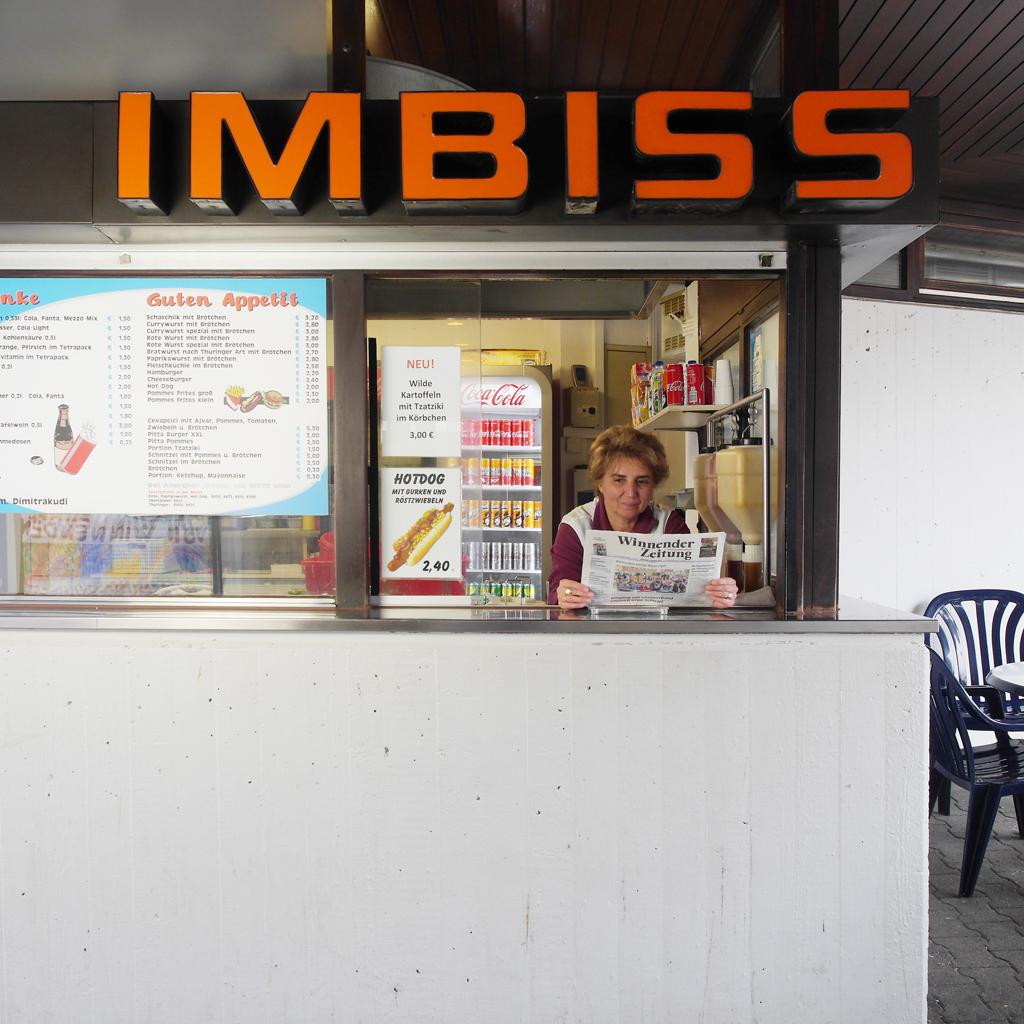
Together with many people and departments at Kärcher, with the city's support and with the (somewhat unexpected) tips from passers-by, I built the installation on the public square in three weeks. I had luck with weather, as although it was September, the sun was shining nearly every day. In the afternoon of October 5th, the Wasserorgel was successfully inaugurated. The opening included a concert of Rainer Wind and the Winnender Wasserorgel Orchestra, which was a melodica group from the adjacent elementary school, directed by their music teacher. People could enjoy the musical fountain until October 28th, which marked the end of the Festival.
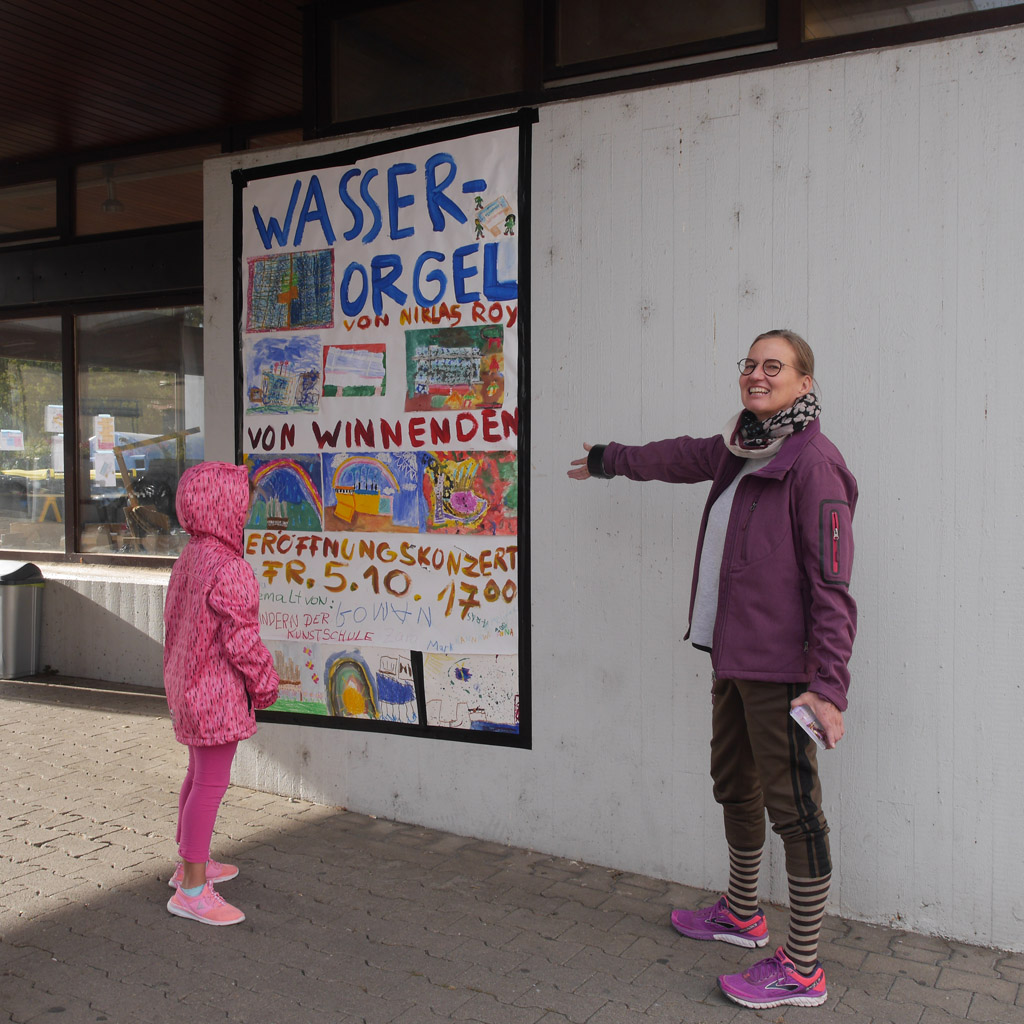
How the Wasserorgel worked
The brain of the Wasserorgel was an Arduino MEGA 2560, stacked with an Adafruit Music Maker Shield. The MIDI synthesizer of the shield generated the instrument sounds based on the input coming from a self-built, 3D printed keyboard. The keyboard was designed solid enough to withstand weather and the misguided enthusiasm of drunk people at 3 'o clock at night. The program on the Arduino translated the keystrokes into water and light effects by switching 12V RGB LED's via darlington transistors and the eight pressure sprayers via solid state relais. Five of the pressure sprayer fountains were installed on top of the main basin, one was installed on top of an existing fountain and two were installed on the roof of the Kronenplatz-building.
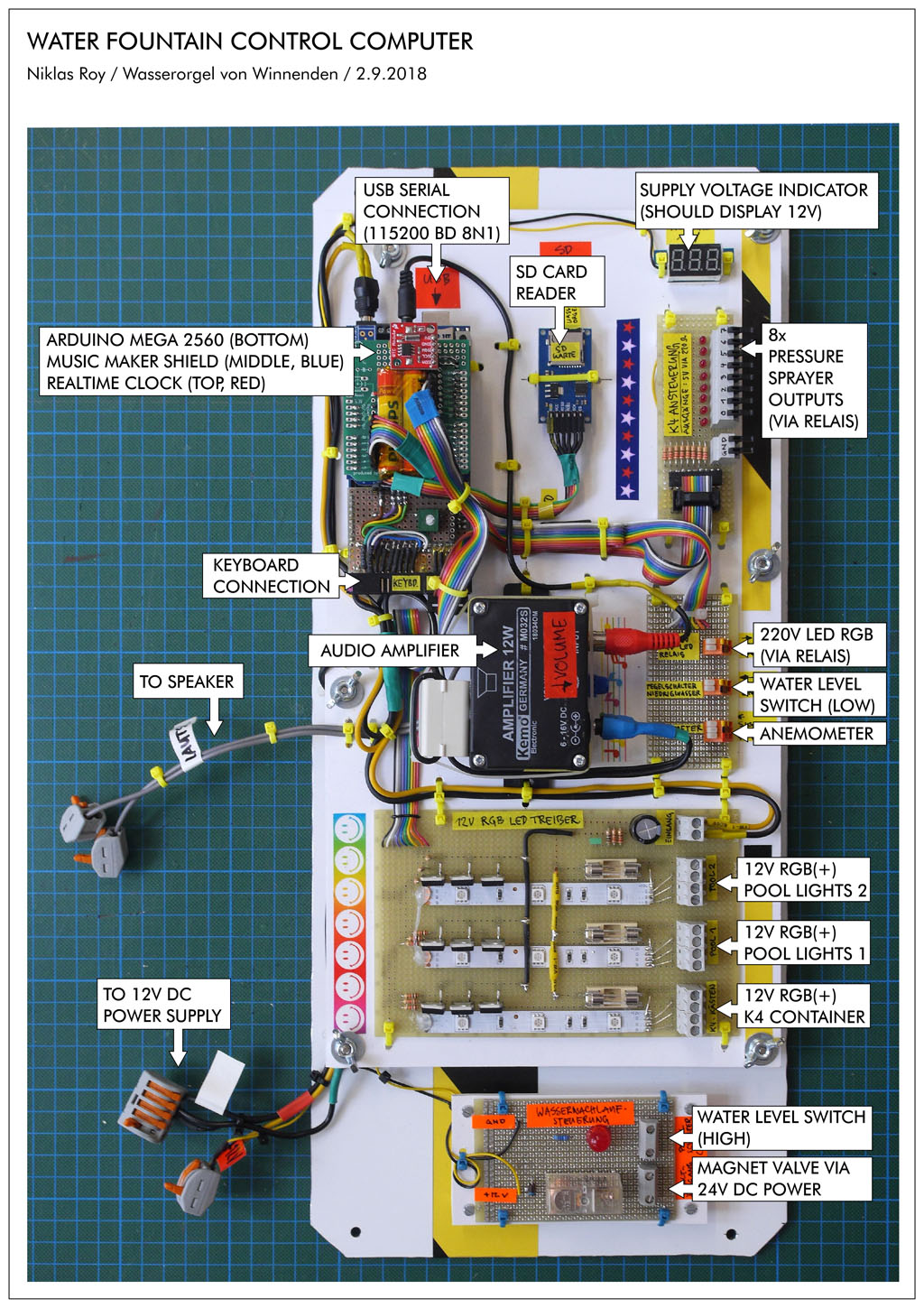
When no-one was using the Wasserorgel, it switched into “attract mode” and played back random melodies, which people have played before. This way, passers-by could also enjoy the Wasserorgel if they weren’t into playing it. People told me that they found it fun to imagine what kind of person had played the tune before. Of course, one could always interrupt the attract mode by just hitting a key and starting to play.
In order to remember all melodies that have been played on the installation, the Arduino also had a realtime clock module and an external SD card slot connected to it. Each keystroke was recorded with a precise timestamp and saved in a log file on the memory card.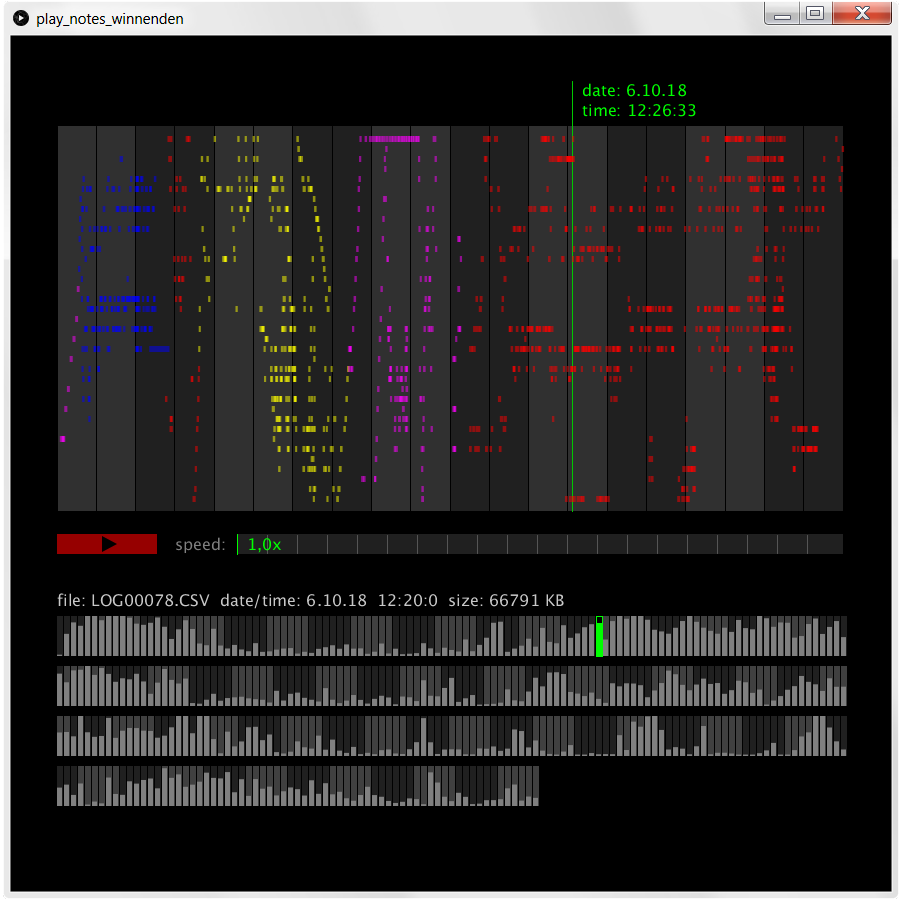
There were couple of more switches and sensors connected to the Arduino, e.g. for observing the water level in the pool, or the outside temperature. The most interesting one was probably the DIY anemometer, whose input was used to switch off the pressure sprayers automatically, when it became too windy.
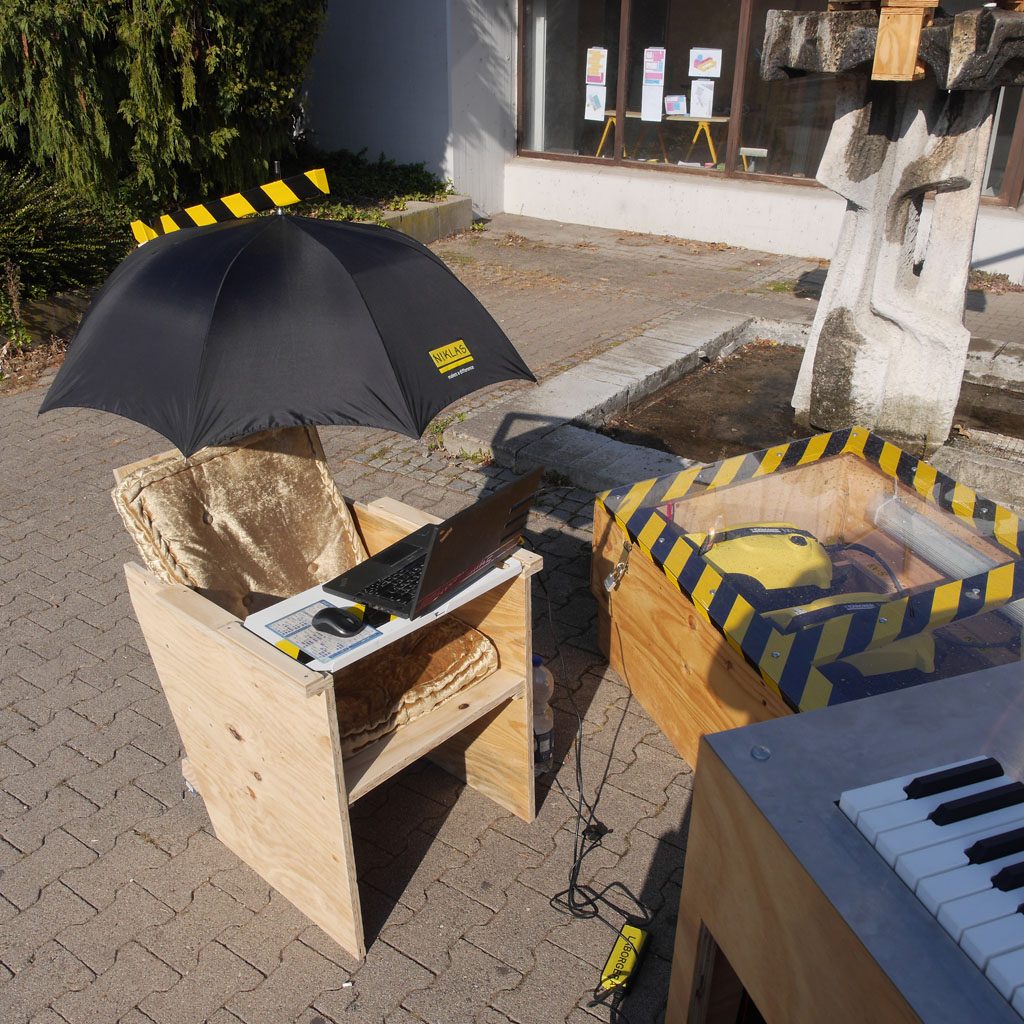
In order to keep the Wasserorgel interesting over the exhibition period of several weeks, the software on the Arduino contained a few Easter eggs for the public to explore. The Wasserorgel had four different MIDI instruments and the way to switch between the instruments was to slide a finger over the keyboard (glissando), or just to play a scale up or down. It's a move that I anticipated many people would do anyway, so the public could eventually discover that feature themselves. Furthermore, depending on the selected instrument, the pressure sprayers also behaved in different ways, adding some variety to the Wasserorgel.
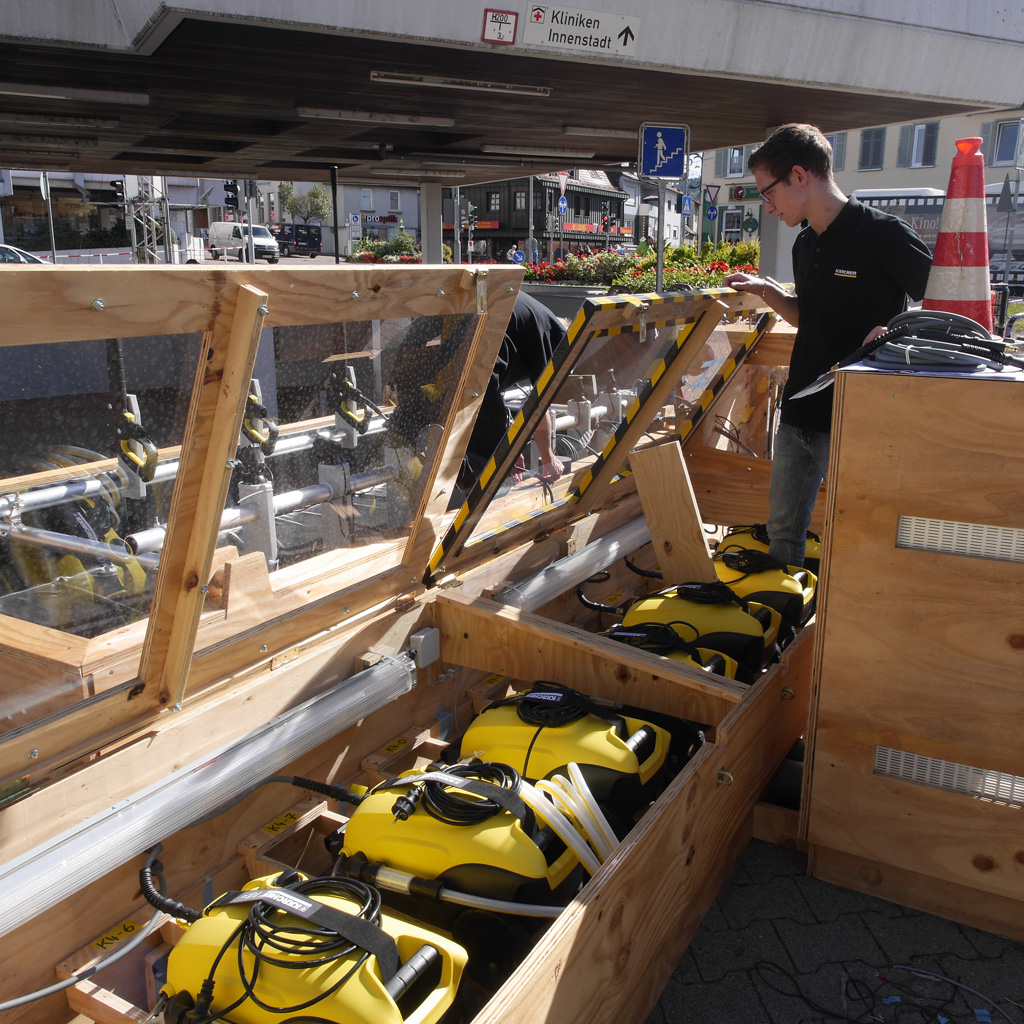
Some of the instruments (e.g. “Glockenspiel”) had a simple interpretation in terms of water flow: A push of a specific key always turned on one according pressure sprayer. Other instruments, like the “Electric Piano”, were interpreted in more complex ways, which were not that easy to decipher at the first glance. It was a bit of a puzzle to figure out which sprayer would respond to which keystroke and especially how to turn on the extra sprayers on the existing fountain and the roof.
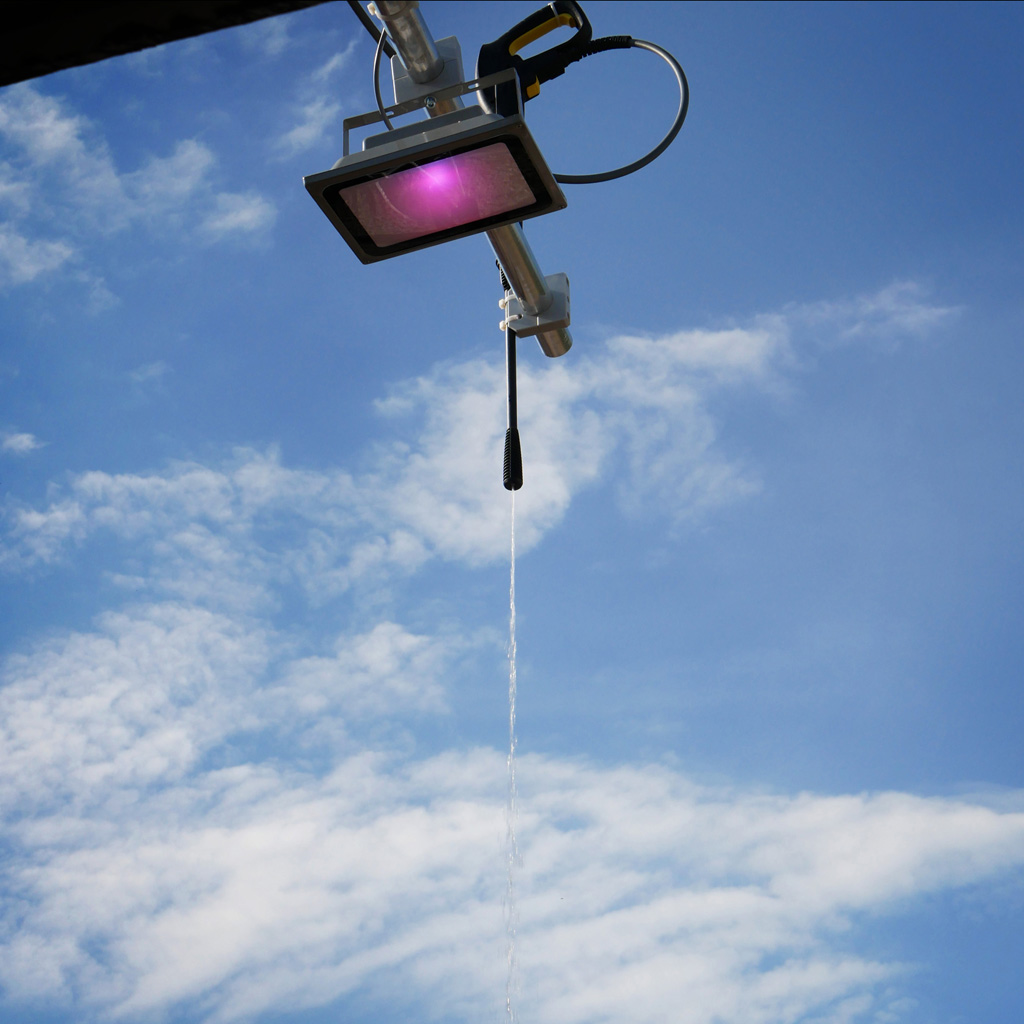
Special thanks
I want to thank Drehmoment's artistic director Benjamin Heidersberger for inviting me to this fantastic festival and for connecting me with Kärcher. Thanks also to Ines, Daniela and the whole organization team of the KulturRegion Stuttgart for doing such a great job!
Also big thanks to Kärcher and especially to Frank Schad, the director of corporate communications and cultural sponsoring. He believed in my ideas from the beginning and made sure that the whole company was supporting the project.
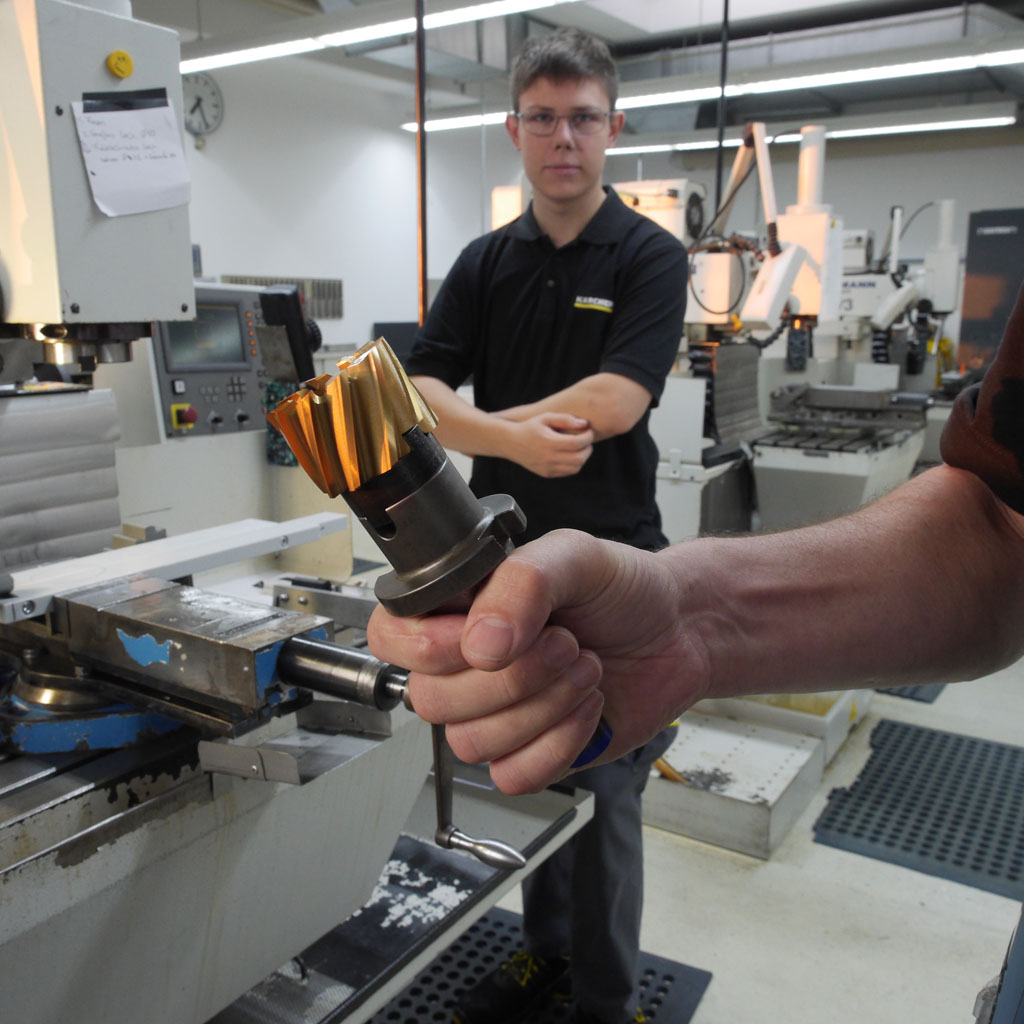
I also want to thank the entire apprentice workshop for their invaluable support during the building process. The educators Hermann, Thomas, Markus, Armin and Andreas were of great help, as they coordinated the work, thought of potential problems already before they would become real problems and always came up with outstanding solutions. The apprentices did all the hard, physical labor. I deeply want to thank the Daniel, Magnus, Lukas, Mustapha, Jan, Charlotte, Torben, Pia, Toni, Maik, Johannes and Herr Görres for all the blood, sweat and tears that they invested in the construction of the Wasserorgel!
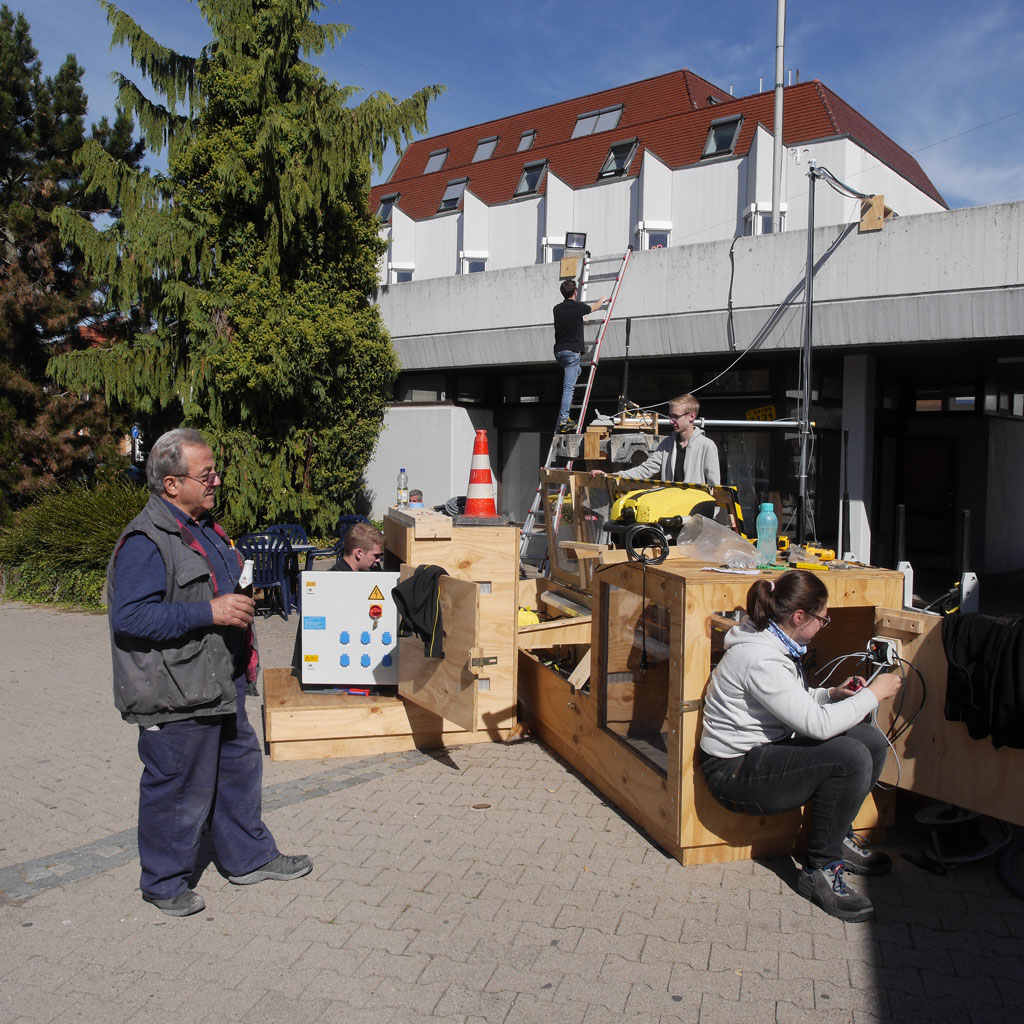
Many other departments and people of Kärcher got involved in the project over time and I want to mention in particular Helge and the entire team of the department of consumer product development. Thanks for building all the special nozzles and for solving mysterious hydraulic problems!
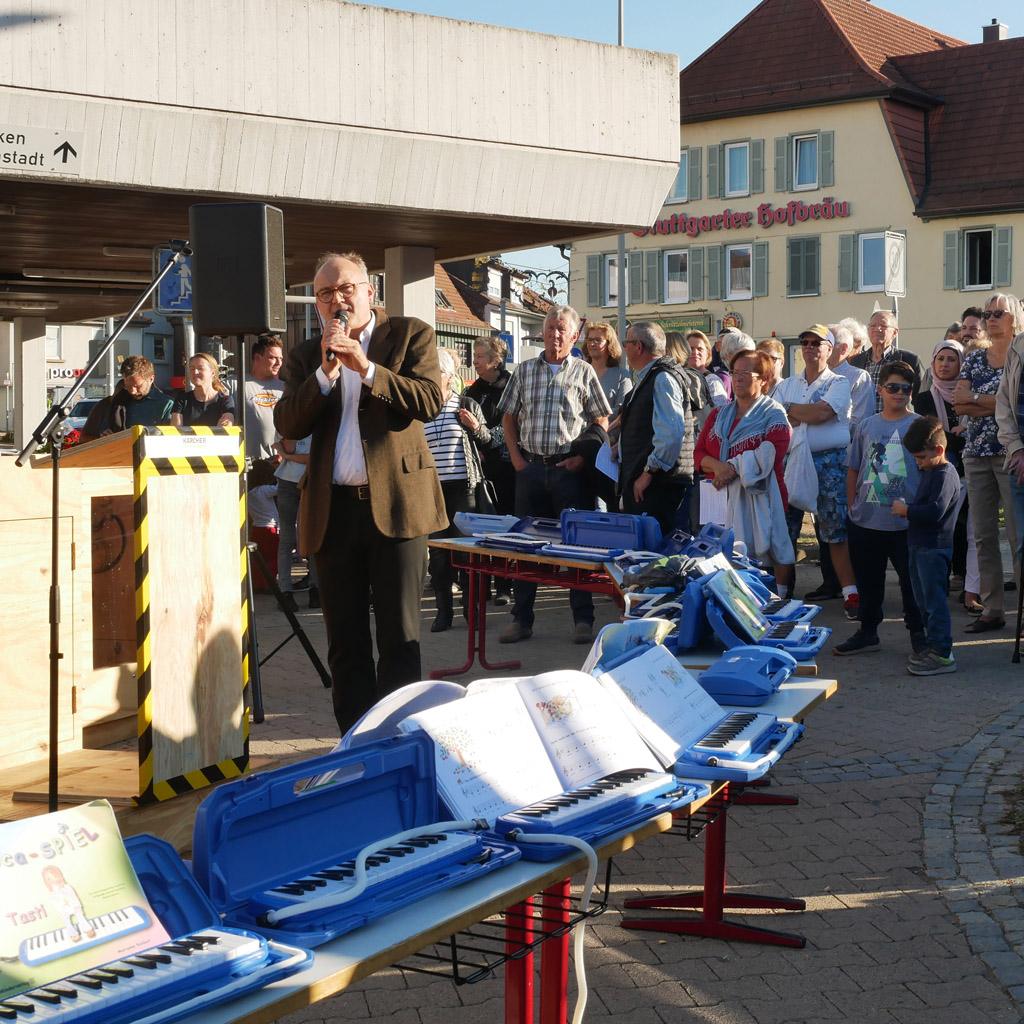
The city of Winnenden was also a great supporter of the project. This text would become too long if I’d list everyone involved, but I want to mention at least the mayor Norbert Sailer, who initially established the contact to Kärcher and who made sure that I had a lot of freedom to realize my plans, and Ralf Köder, the director of the city's real estate department, who provided me with the super Wasserorgel-workshop in the old bank.
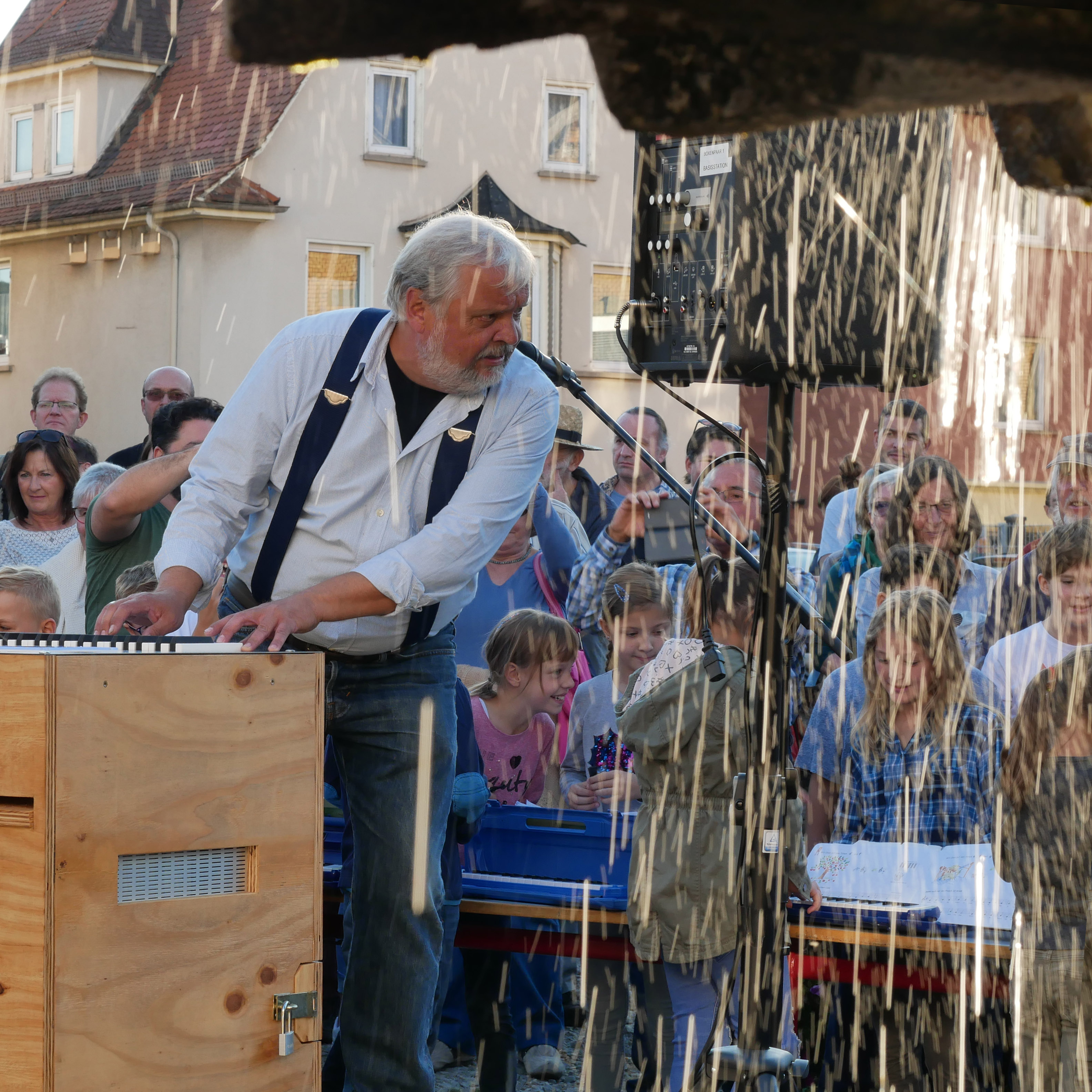
Many thanks also to all the kids of the local art school and its director Barbara Kastin for painting such a great poster for the opening concert. My gratitude also goes to all the melodica-playing kids of the Kastenschule and their music teacher Rainer Wind for making the opening such a great musical success!
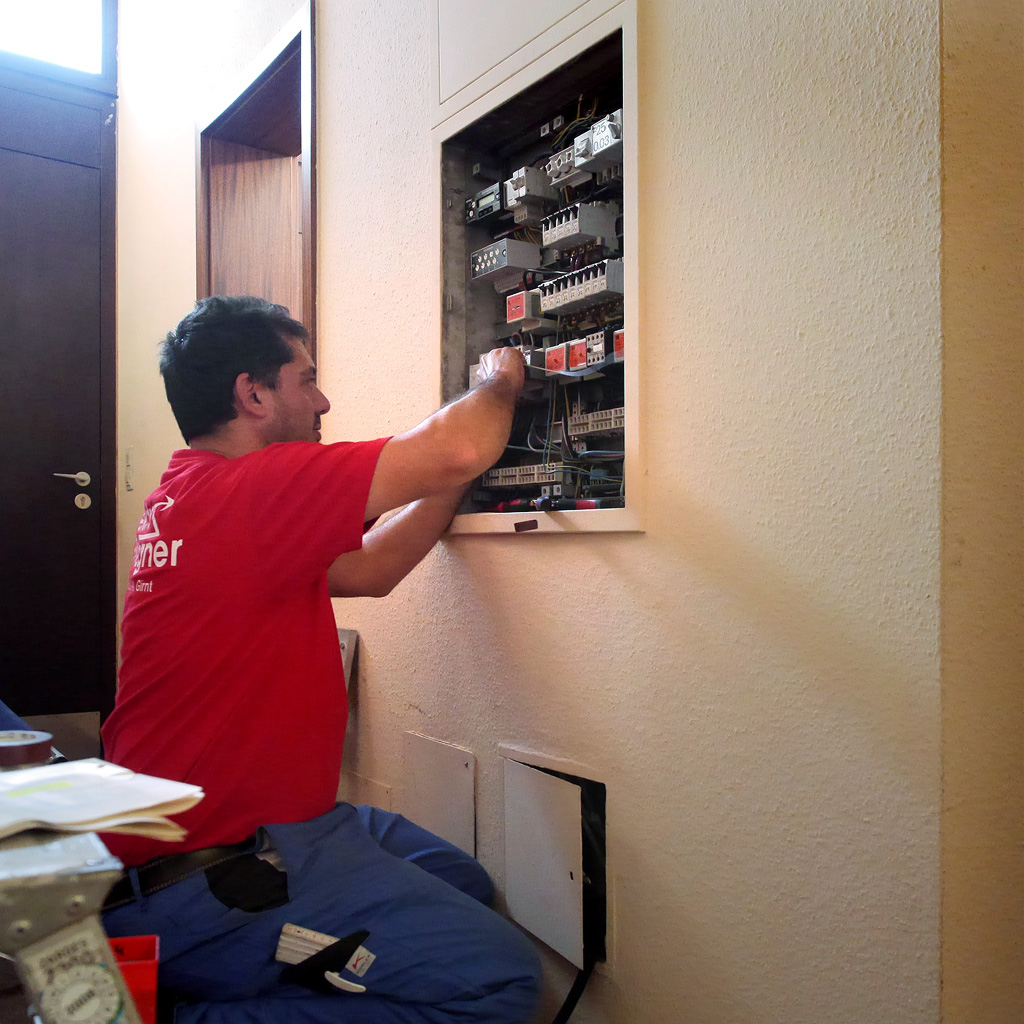
Special thanks also to Andreas Girnt of the local company Elektro Wagner. He modified the fuse box in the bank in such way that the Wasserorgel could suck 15KW of electrical power out of the grid. He never charged me for his labor, therefore I probably have to regard his services as generous cultural sponsoring! Thanks and well done, Herr Girnt!
The local kids Dilana, Rahma and Aras get a big thanks for visiting me regularly in the afternoons. Not only did they keep me entertained, but they also helped me to clean up and re-organize the workshop from time to time. Other locals were of great help, too, but I don't know their names: Thanks to the person, who helped me placing the stubborn pond liner in the pool and thanks to the retired swimming pool builder who helped me solving the unexpected moisture problem with the gully!
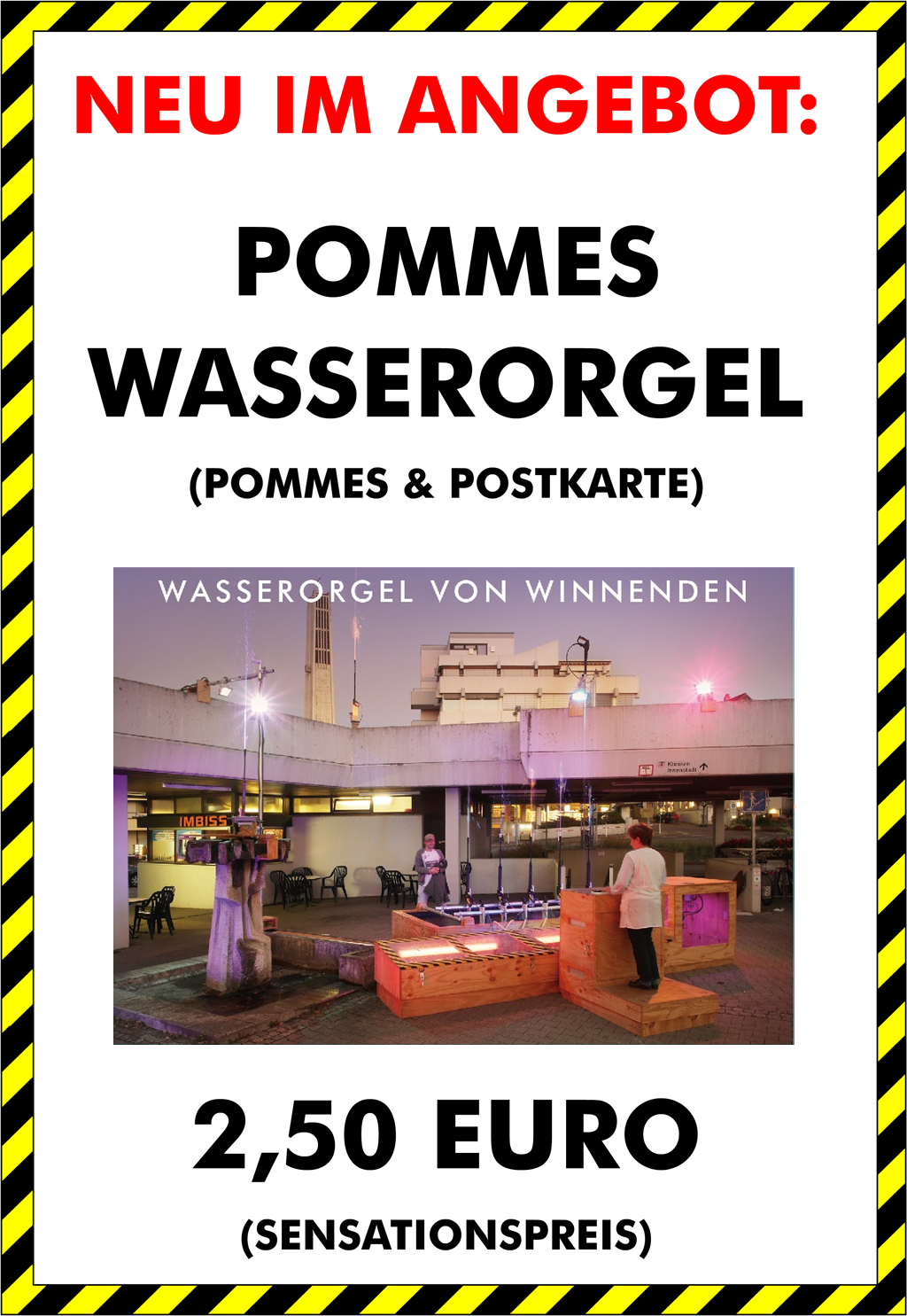
Aphrodite Dimitrakudi of the Imbiss did not only do a fantastic job of communicating the project to the public, but she also made sure that I always had enough to eat and on top of that, she took care of the Wasserorgel when it was open to public. Big thanks for this! When you are in Winnenden, please stop by at her place and treat yourself with some crispy “Pommes Wasserorgel”!
Additional resources
The festival has also produced a documentation when the work was still in progress:
I have also uploaded a lot more materials. Everything that's listed below is published under a CC0 license. This means, you can simply do whatever you want with it. In case you want to add credits, I'd be happy if you'd mention the project's title “Wasserorgel von Winnenden”.